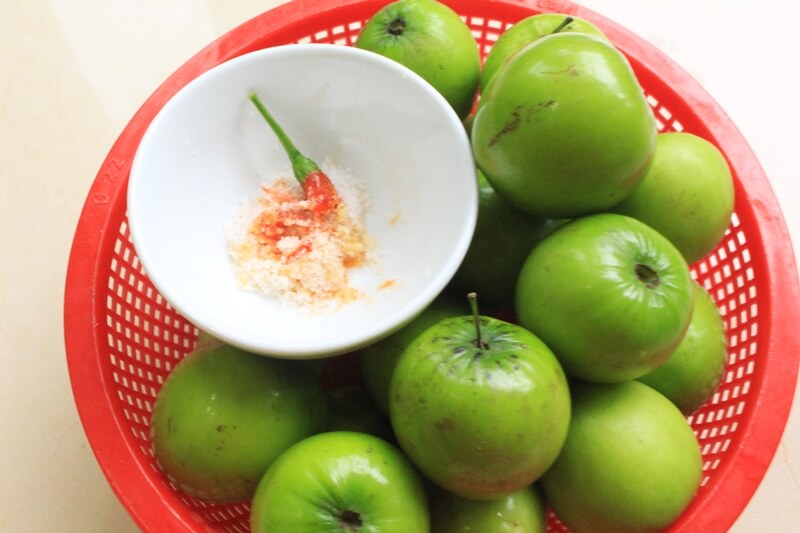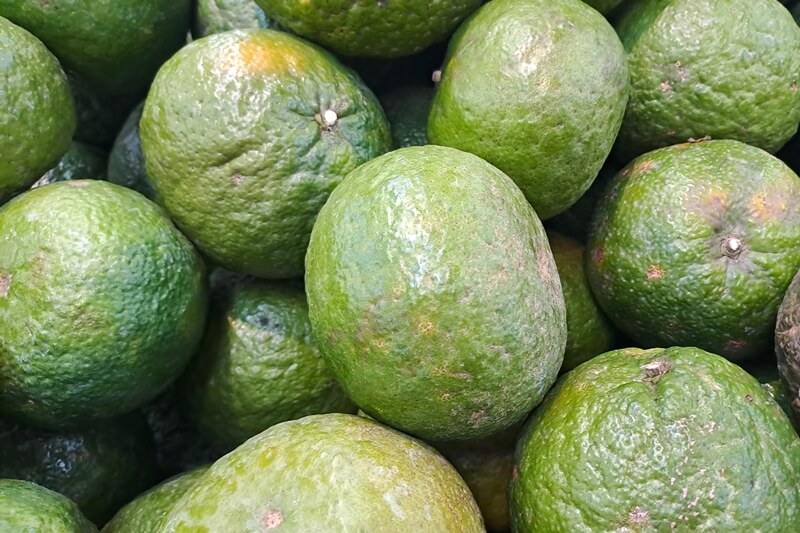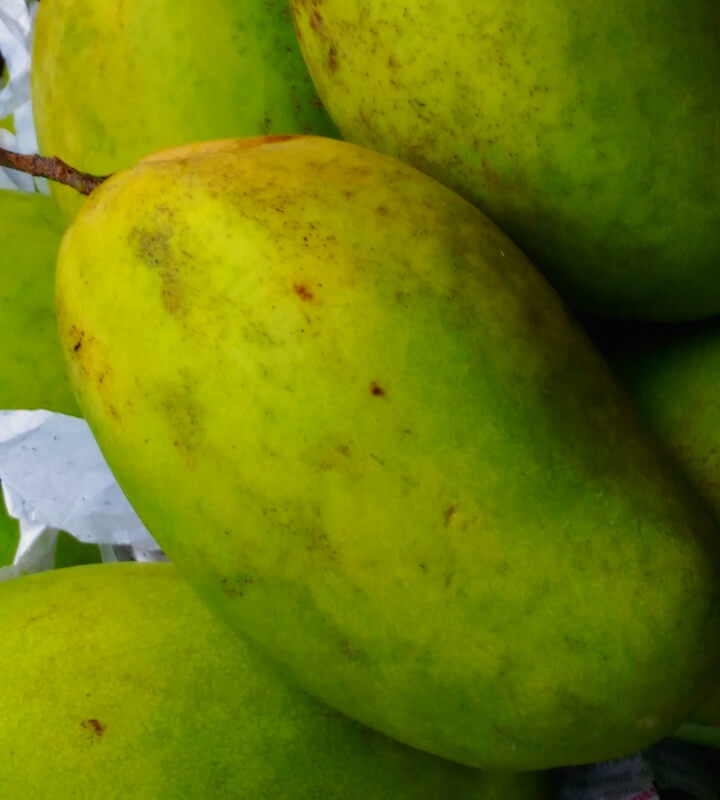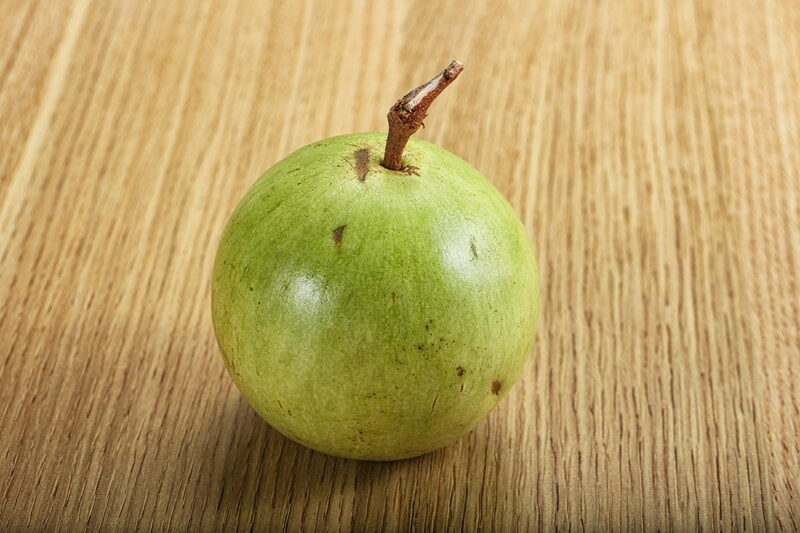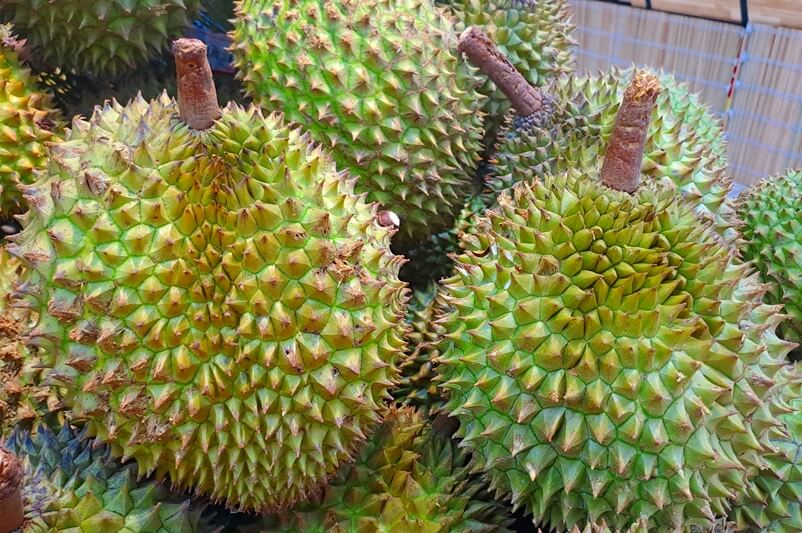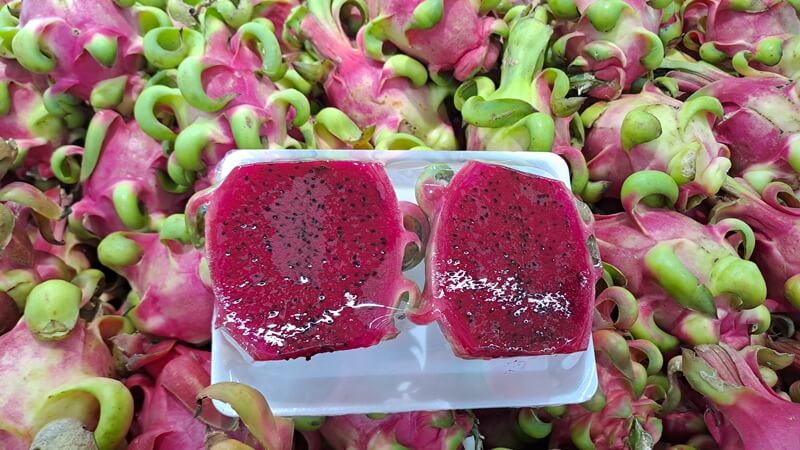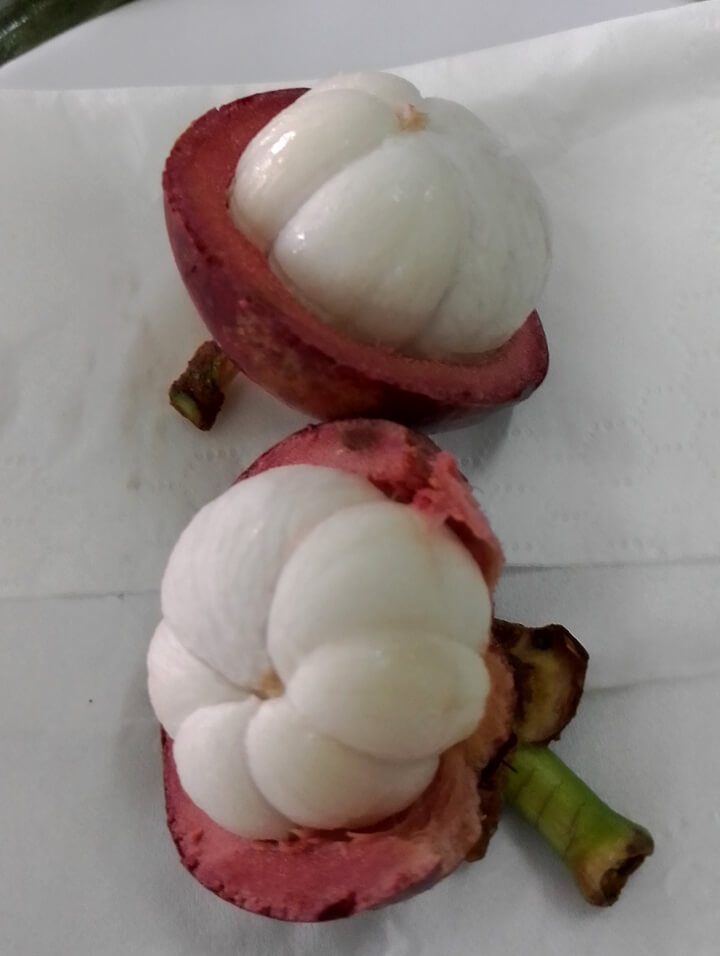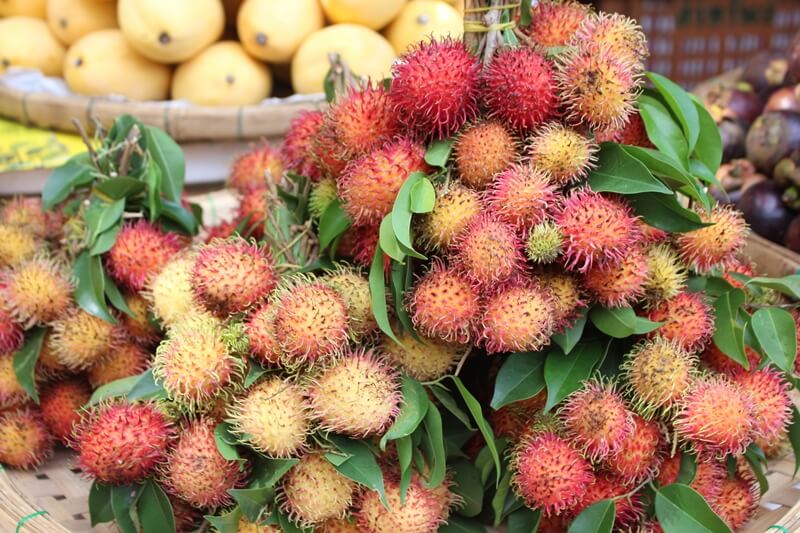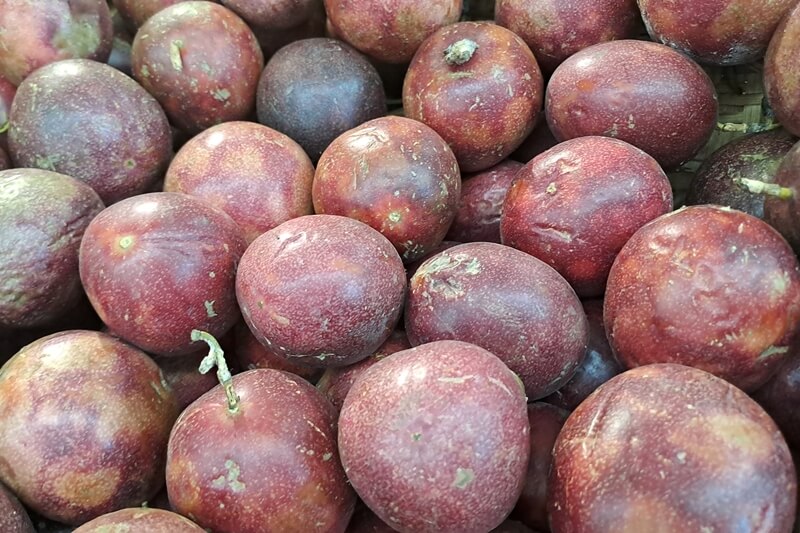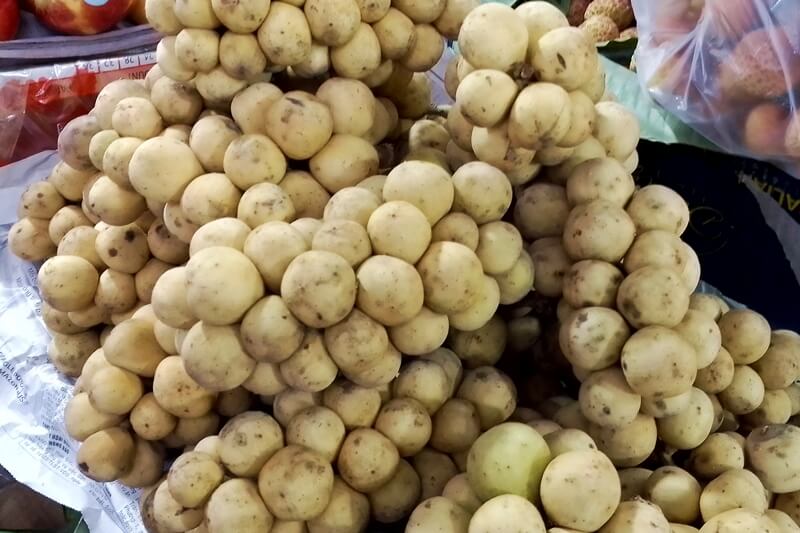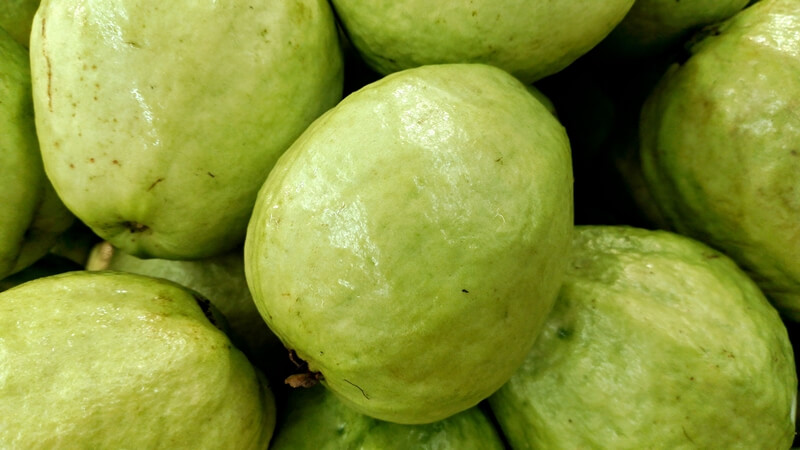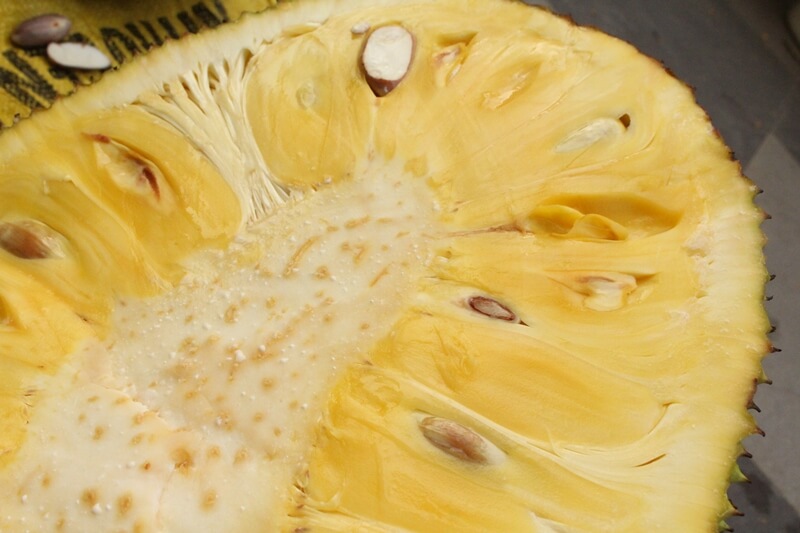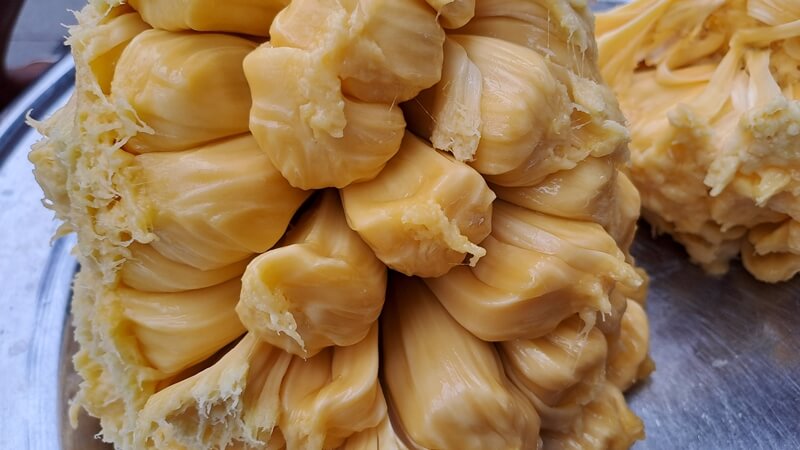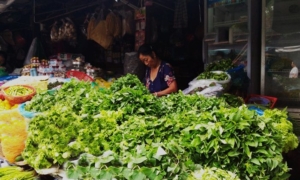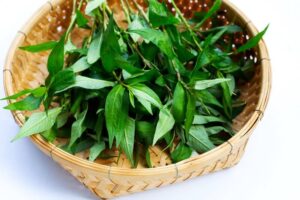Vietnam has a tropical climate with abundant soil and freshwater suitable for growing fruit trees. Many Vietnamese fruits are famous among the locals and tourists, sold in the domestic region, and exported to different countries.
Table of contents:
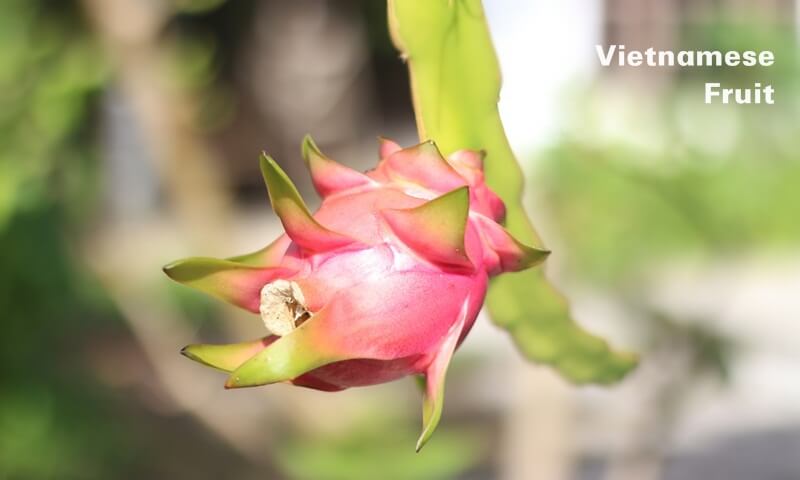
When traveling to Vietnam, you might try some popular fruits, which can make you more in this beautiful country.
The structure of each part introduces the fruit’s name in English and Vietnamese, how it is, where it is the main place to grow, the original seasons of harvest, and the average price of each fruit.
Green apple (Táo xanh)
Green apples are grown everywhere in Vietnam because they are one of the most accessible tropical trees. Green apple trees differ from apple trees in temperate countries because their trunks are smaller and often have thorns.
Of course, Vietnamese green apples are much smaller than regular apples, only 1/6 the size. The smell is not strong; the taste is sour and slightly sweet. When chewing, the eater feels crunchy.
This green apple has various vitamins that are good for health. Because it is small, most people eat this apple’s skin. However, we encourage you to wash and peel apples purchased at the market to ensure food safety.
Almost every market or supermarket in Vietnam sells this type of green apple at a very reasonable price at fruit counters.
- Reference price: 15,000 VND to 35,000 VND/kg
- The peak season: August and December
Vietnamese orange (Cam sành)
Vietnamese orange, also known as green orange, is prevalent in most regions of Vietnam. The fruits are usually green on the outside but have a beautiful orange-yellow color inside.
Vietnamese oranges are renowned for their unique sweet and sour taste, packed with a generous amount of juice. Rich in Vitamin C, locals often use these oranges to make refreshing orange juice, a popular choice in hot and humid climates.
In South Vietnam and the Central Highlands, Vietnamese oranges are harvested in May and June. However, another crop is harvested from November to December every year, which is the rainy season in central and northern Vietnam.
Orange growers want to get high prices and meet people’s consumption needs, so they have to take measures to interfere with the flowering and fruiting process for orange trees.
Thanks to careful harvesting techniques, green oranges are a common sight in local markets in Vietnam throughout the year, ensuring a steady supply for the locals.
People call this fruit type Green Oranges because gardeners harvest them still slightly green to transport and keep longer. If oranges are harvested with a yellow color on the skin, they are easy to spoil and do not preserve for long.
An excellent way to taste this orange is to order a glass of orange juice. Orange juice provides many micronutrients, especially Vitamin C, which gives you more stamina for the trip.
- The average price of green oranges: 15,000 VND – 35,000 VND/kg
- The primary season: November to December in Central and North Vietnam, and from May to June in South Vietnam and the Central Highlands
Mango (Xoài)
Vietnamese mangoes are delicious fruits with rich flavor and attractive colors. They weigh 350 – 450 grams. When ripe, the mangoes become light yellow with fresh flesh and a sweet taste.
Visitors can find mangoes at most places in Vietnam. But the best mangoes originate from Hoa Hung commune, Cai Be district, Tien Giang (the former name Hoa Loc commune, Giao Duc district, Dinh Tuong province) in the Mekong Delta.
Eating the ripe Hoai Loc mango (Xoài Cát Hòa Lộc) is tasty. You can feel the smooth meat, less fiber, and no matter how ripe it is, not be friable. Hoa Loc mangoes follow traders to many provinces and cities and are also reaching out to the international markets in the US and Japan.
In South Vietnam, mango season usually lasts from the end of April to July. Many boats and trucks carry ripe, flavorful mangoes to other cities.
- The average price of Hoa Loc mango: 60,000 – 80,000 VNN/kg.
- The peak season: From the end of April to July
Milk Fruit (Vú sữa)
Milk Fruit, also called Milk Apple or Star Apple, has a light sweet taste and is well-known in Vietnam. It is rich in vitamins, fiber, and minerals, providing essential energy to the body. According to some research, milk apples also help reduce weight and increase bone strength.
Lo Ren Milk Fruits are the best in Vinh Kim commune, Chau Thanh district, Tien Giang province, Mekong Delta of Vietnam. The milk apple fruits in this area offer good flavor, white skin, tiny seeds, thick pulp, and a sweet and aromatic taste.
A milk fruit’s average size is 7.3 – 8.4cm and weighs 250 – 350 grams/fruit. The main crop to harvest the star apple is from January to March every year.
You can buy milk fruit at almost all local markets and supermarkets in Vietnam. You may also see another kind of milk fruit with purple skin. The purple start apple is not as good as the white milk apples, so you know this to choose good ones to taste.
- The average price of milk fruit: 40,000 – 80,000 VND/kg
- The prime season: From January to March
Durian (Xầu riêng)
Durian is a typical fruit growing in South Vietnam. The durian trees in Vietnam came from Thailand and were first cultivated in the Tan Quy and Bien Hoa districts, Dong Nai province. Then, they have spread to the Mekong Delta region and the Central Highlands.
The best durian is grown in Vinh Long commune in the Mekong Delta. For many people who have never eaten it, the smell is awful and as scary as its thorny appearance. However, those familiar with its taste love the special flavor of sweetness and flour-like butter.
Also, the famous name of this fruit is durian Ri6. Ri6 was named to remember Mr. Sau Ri, who created a great type of durian in Vietnam. Ri6 durian is a typical fruit with a high value of calories, carbohydrates, proteins, lipids, and minerals compared to the different fruits.
A durian fruit weighs from 2 to 5 kg and often has a large yellow flash, which is eye-catching.
During the year, durian trees usually flower two times. Flowering, from December to January, is to produce the first harvest in June and July – the main crop. The second flowering time is in July and August, and harvest in February and the beginning of March for the off-season.
- The price of durian: 70,000VND – 120,000 VND/kg
- The prime season: June and July
Dragon Fruit (Thanh long)
Dragon fruit belongs to the cactus family, and some places call it Pitaya Vietnam. When the fruits are ripe, their skins turn dark pink or red. Two kinds of dragon fruit have white and red pulp inside. The red pulp is sweeter than the white one.
Dragon fruit has a sweet taste and coolness, containing many vitamins, such as B1, B2, and B3. It works to improve the digestive system, fight skin aging, and control and prevent diabetes. Despite being famous for its deliciousness, the dragon fruit is listed as one of the cheapest national fruits in Vietnam.
In the 1990s, Binh Thuan farmers in Central Vietnam planted dragon fruits as ornamental plants. After that, they developed into fruit trees today. This plant is drought-resistant, not picky of soil, and suitable for hot climatic conditions, and the soil in Binh Thuan often has a hot and dry climate.
Every year, at the beginning of April, dragon fruits begin to flower. After 50 days, the primary season of the dragon fruit starts at the beginning of June and lasts until the end of September. Then, the farmers continue caring for the plants to get the off-season beginning in December.
With the new technique to grow the dragon fruit, you can buy this fruit nearly all year round when you travel to Vietnam.
- The price of dragon fruit: 15,000 – 25,000 VND/kg
- The prime season: June to September
Mangosteen (Măng cụt)
Mangosteen is a common fruit in Vietnam, Thailand, Malaysia, and Indonesia. Trees can reach up to 10 meters in height.
When mangosteens get ripe, they have a dark purple color. Mangosteen gums are white and divided into many zones with a sweet and slightly sour taste and unique aroma.
In Vietnam, farmers grow many mangosteen trees in the Mekong Delta provinces. These plants are suitable for the economy. The eaters voted them “the queen of tropical fruit trees” because of their beautiful shape and flavorful taste.
Cho Lach mangosteen, a specialty of the Ben Tren province (the Mekong Delta, Vietnam), is famous to many people. The Cho Lach district has 1,200 hectares for mangosteen cultivation.
The harvest season of Vietnamese mangosteen is from mid-April to June. This fruit has different sizes. When you want to taste it, you should choose a small or medium size. It’sThe big size also has large seeds.
- The price of mangosteen: 50,000 – 90,000VND/kg
- The prime season: From mid-April to June
As with any fruit, although mangosteens have plenty of good health vitamins, you should not eat them much because they can cause allergic reactions and interfere with blood coagulation.
Rambutan (Chôm chôm)
Passion fruit has a round shape with a dark purple color and wrinkled skin when ripe.
Vietnamese passion fruits contain many tiny seeds covered by yellow flesh. The yellow flesh can be eaten and has a sour taste and fragrant smell. The passion is used to make a cooling drink in summer.
Passion fruit has different names in Vietnamese, including Chanh leo, Chanh dây, or mát mát. Its scientific name is Passiflora incarnate, belonging to the genus of Lac Tien (Passiflora).
Passion fruit is rich in pectin, a type of fiber that helps you feel full without increasing calories. It also works to reduce bad cholesterol and improve the function of insulin.
This fruit is also a source of vitamin A, flavonoids, and other phenolic compounds that help prevent cancer.
The Central Highlands of Vietnam is the main area where passion fruits can be grown. Vietnam is a world leader in exporting passion fruit and its products. The main markets are European countries, China, and domestic consumption.
- The cost of rambutan: 15,000 – 30,000 VND/kg
- The peak season: From July to October
Passion Fruit (Chanh leo)
Passion fruit has a round shape with a dark purple color and wrinkled skin when it’s ripe.
Vietnamese passion fruits contain a lot of tiny seeds covered by yellow flesh. The yellow flesh can be eaten and has a sour taste and fragrant smell. The passion is used to make a cooling drink in summer.
Passion fruit has different names in Vietnamese, including Chanh leo, Chanh dây, or mát mát. Its scientific name is Passiflora incarnate, belonging to the genus of Lac Tien (Passiflora).
Passion fruit is rich in pectin, a type of fiber that helps you feel full without increasing calories. It also works to reduce bad cholesterol and improve the function of insulin.
Besides, this fruit is a source of vitamin A, flavonoids, and other phenolic compounds that help prevent cancer.
The main area to grow passion fruits is the Central Highlands of Vietnam. Currently, Vietnam is a world leader in exporting passion fruit and its products. The main markets are European countries, China, and domestic consumption.
- The cost of passion fruit: 10,000 – 17,000 VND/kg
- The peak season: August to December
Bon Bon Fruit (Lòn bon)
Bon Bon fruit in Vietnam is milky white and double the size of a finger. Its flesh has a sweet taste and many zones of bitter seeds. So, when eating Bon Bon, you should avoid biting its pips.
Bon Bon, some places also call it bòn bon, lòn bon in Vietnamese, is the scientific name of Lansium domesticum, belonging to the Meliaceae family. According to nutritionists, every 100 g of Bon Bon contains 0.8 g of protein, 9.5 g of carbohydrates, 2.3 g of fiber, 20 mg of calcium, 30 mg of phosphorus, 0.089 mg of thiamine; 1 mg of ascorbic acid, and quite a lot of vitamin A.
Bon Bon Fruits also contain sugar, fiber, fat, protein, and vitamins B1, B2, B3, C, and E – considered antioxidant substances. They can help the body eliminate free radicals leading to Cardiovascular diseases and strokes. Also, minerals such as Ca, Fe, and P help increase red blood cells and prevent anemia.
Thanks to its rich thiamin and riboflavin content, Bon Bon is very good at fighting migraines. Niacin reduces bad cholesterol and increases good cholesterol in the blood.
When eating Bon Bon, you choose an excellent medium-sized fruit, neither large nor small, just a little bigger size than a thumb, yellow-white skin, and round. Do not select big fruits because the seeds are large and often sour, and those with dark spots do not eat well.
The main areas growing Bon Bon are Tien Phuoc district (in Quang Nam province) and Dak Lak (in the Central Highlands). However, a few provinces in the Mekong Delta also cultivate it now. The harvest season of Bonbon is from October to December.
- The price of Bon Bon: 30,000 – 50,000VND
- The peak season: October to December
Guava (Quả ổi)
Vietnamese guava can grow in most of the provinces in Vietnam. This tree is easy to plant and care for, so many farmers like to develop the economy with it. Also, the flavor of ripe guava is odorous, so many people want to taste it. Thus, its market spreads all around Vietnam.
Guava is a round or oval fruit with light green or yellow skin. The flesh inside is white or reddish, with edible seeds. Vietnamese guava is a nutritious food. Qua Oi contains many essential components and supports the body against disease.
100 g of guava contains about 126 mg of Vitamin C. Other nutrients in the fruits are also low in calories and high in fiber. Regular use of guava fruits can boost heart health and the digestive system, boost immunity, and protect the body from many pathologies.
The season of guava in Vietnam is from August to October. But, with the new technique to grow guava trees, you can find their fruits all year round in the markets in Vietnam.
We can eat nearly all of the guava; however, we recommend you peel the skin before eating to avoid chemicals and hygiene.
- The price of guava: 15,000 – 35,000 VND/kg
- The prime season: August to October
Jackfruit (Quả mít)
Jackfruit is Quả mít in Vietnamese. This fruit is the same as a fast-growing tropical Asian tree related to the durian. Mit fruit has a fragrant smell and a big size of up to 15kg, but the durian has a bad smell at first taste and is much smaller than jackfruit.
Jackfruit trees grow all around Vietnam, but the large areas to cultivate them are in the Mekong Delta, including Cai Be (Tien Giang province), Phong Dien (Can Tho), and Thoi Lai (Hau Giang).
The feature of the jackfruit tree is to harvest nearly all year round, but the peak season is from June to August.
When the Mit Vietnamese fruit is ripe, it has an average weight of 10-15 kg. The inside contains large yellow zones with a sweet taste and scented flavor.
Jackfruit is rich in nutrients, such as vitamins A and C, calcium, iron, potassium, and magnesium, which are beneficial to health.
However, when you feel hungry, you should not eat jackfruits. Also, avoid tasting it at night and chew its flesh carefully.
There are two kinds of jackfruit: dry and wet. The wet Mit is very soft and much easier to taste. The dry jackfruit is crunchy for those who like to chew.
- The cost of jackfruit: 25,000 – 40,000 VND/kg
- The prime season: June to August
Conclusion:
Vietnam has different tropical fruits with great taste and flavor. Tasting some fruits can make your holiday experience more enjoyable when you visit the country.
However, for some strange fruits you have never eaten, try a little to know the taste and how it is. This skill protects the body from being influenced by different foods.
Never eat fruits directly at a market or supermarket. You have to wash them before eating. And, it is always better to peel the skin of any fruit.
All these things can help you select good Vietnamese fruits to taste when you are on your journey.
Which fruit do you like best?

